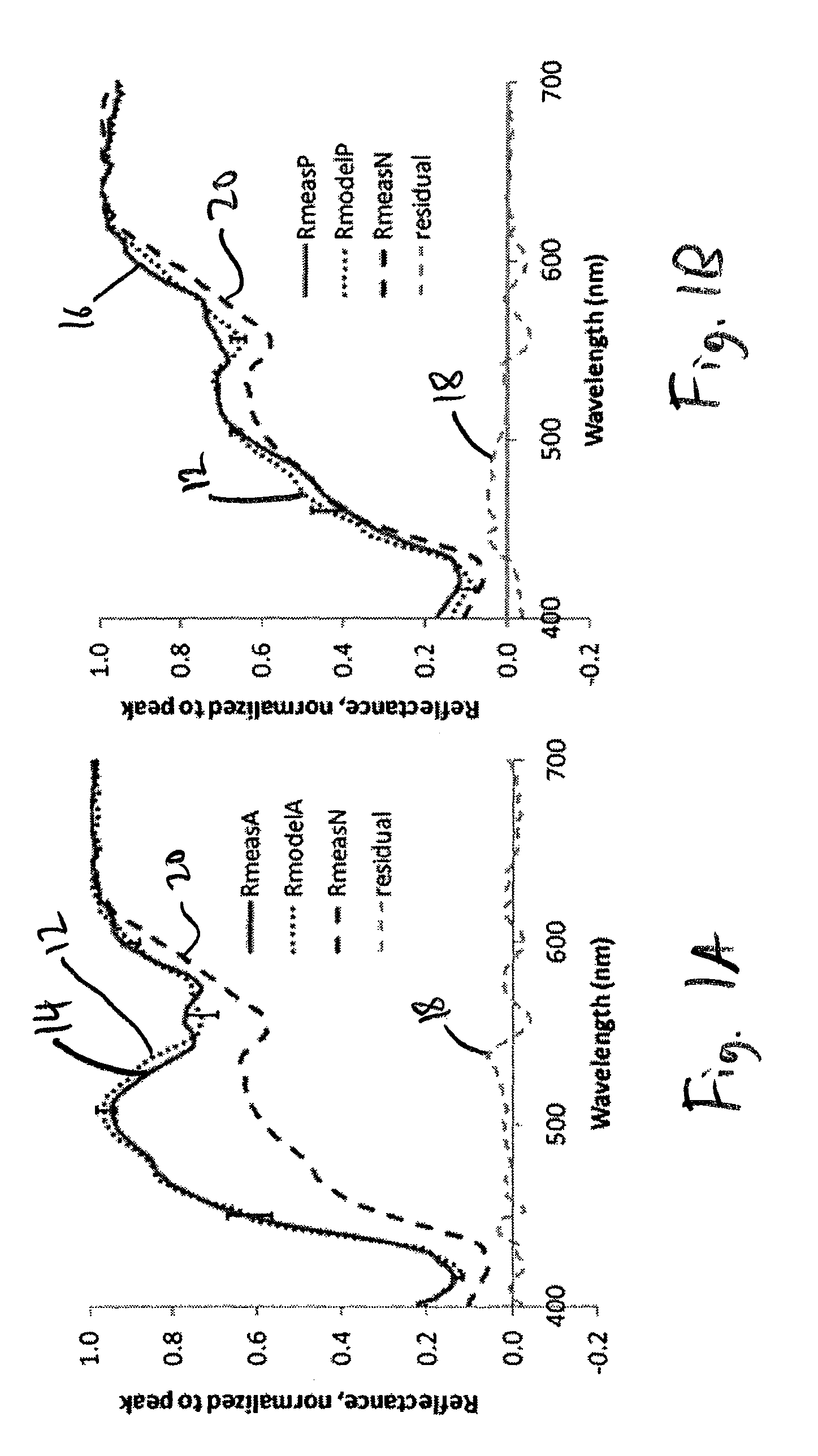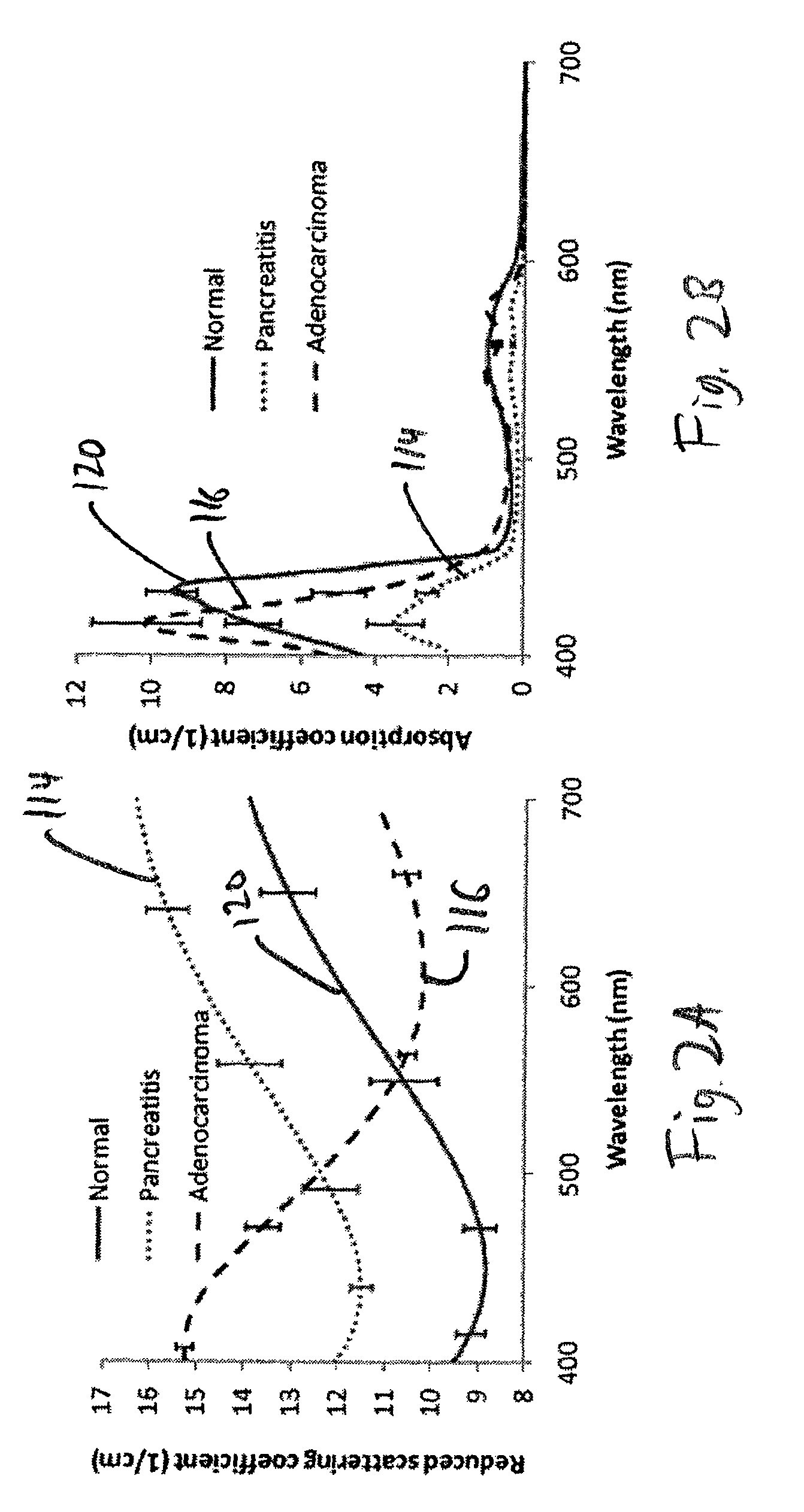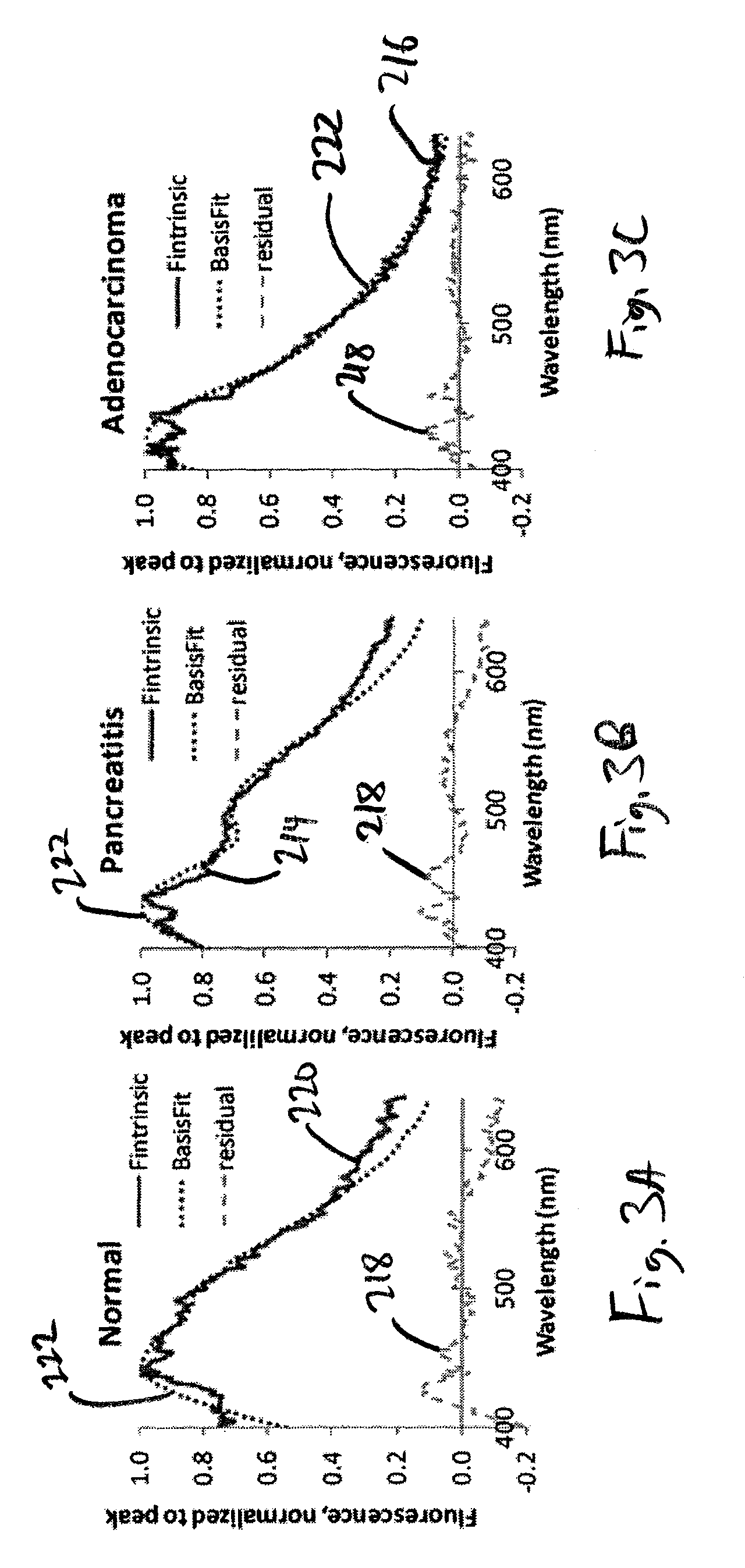Multimodal spectroscopic systems and methods for classifying biological tissue
a multi-modal spectroscopic and biological tissue technology, applied in the field of medical imaging systems, can solve the problems of small tissue diagnosis sites, relative non-expensive, etc., and achieve the effect of small sites and non-expensiv
- Summary
- Abstract
- Description
- Claims
- Application Information
AI Technical Summary
Benefits of technology
Problems solved by technology
Method used
Image
Examples
Embodiment Construction
[0052]Some embodiments of the invention employ multimodal optical spectroscopic systems and methods to obtain data from biological tissue and compare the data with preset criteria configured to aid in the diagnosis of the tissue health or condition, wherein the preset criteria relates the data with the most probable attributes of the tissue. The multimodal spectroscopic systems employed may include fluorescence spectroscopy, reflectance spectroscopy and time-resolved spectroscopy, among others.
[0053]In some embodiments, data obtained through multimodal optical spectroscopy is correlated with the results of a microscopic histological examination of a normal tissue sample to develop the preset criteria by which further tissue samples are to be assessed. In particular, the preset criteria may be based on a relationship between spectral data and the histological aspects of the tissue which are most likely to be indicative of a specific attribute so as to lead to a unique classification ...
PUM
| Property | Measurement | Unit |
|---|---|---|
| illumination wavelengths | aaaaa | aaaaa |
| wavelengths | aaaaa | aaaaa |
| wavelengths | aaaaa | aaaaa |
Abstract
Description
Claims
Application Information
 Login to View More
Login to View More - R&D
- Intellectual Property
- Life Sciences
- Materials
- Tech Scout
- Unparalleled Data Quality
- Higher Quality Content
- 60% Fewer Hallucinations
Browse by: Latest US Patents, China's latest patents, Technical Efficacy Thesaurus, Application Domain, Technology Topic, Popular Technical Reports.
© 2025 PatSnap. All rights reserved.Legal|Privacy policy|Modern Slavery Act Transparency Statement|Sitemap|About US| Contact US: help@patsnap.com



